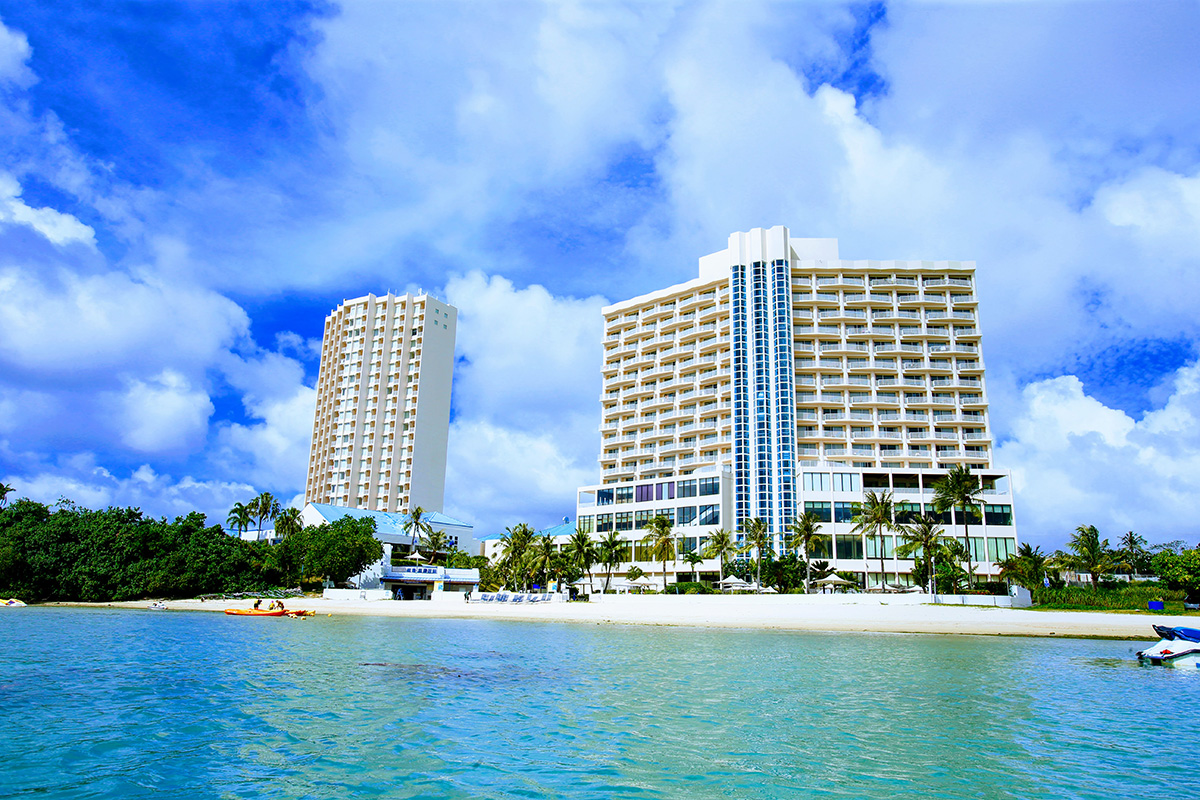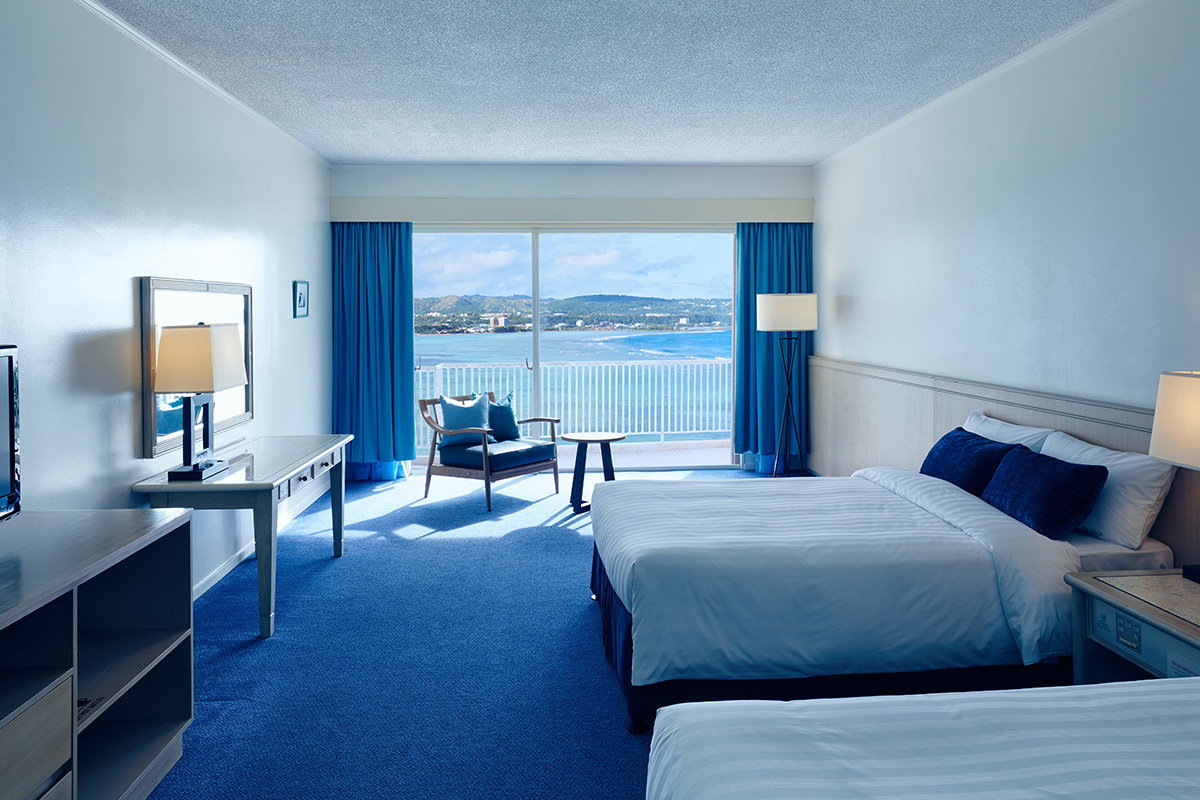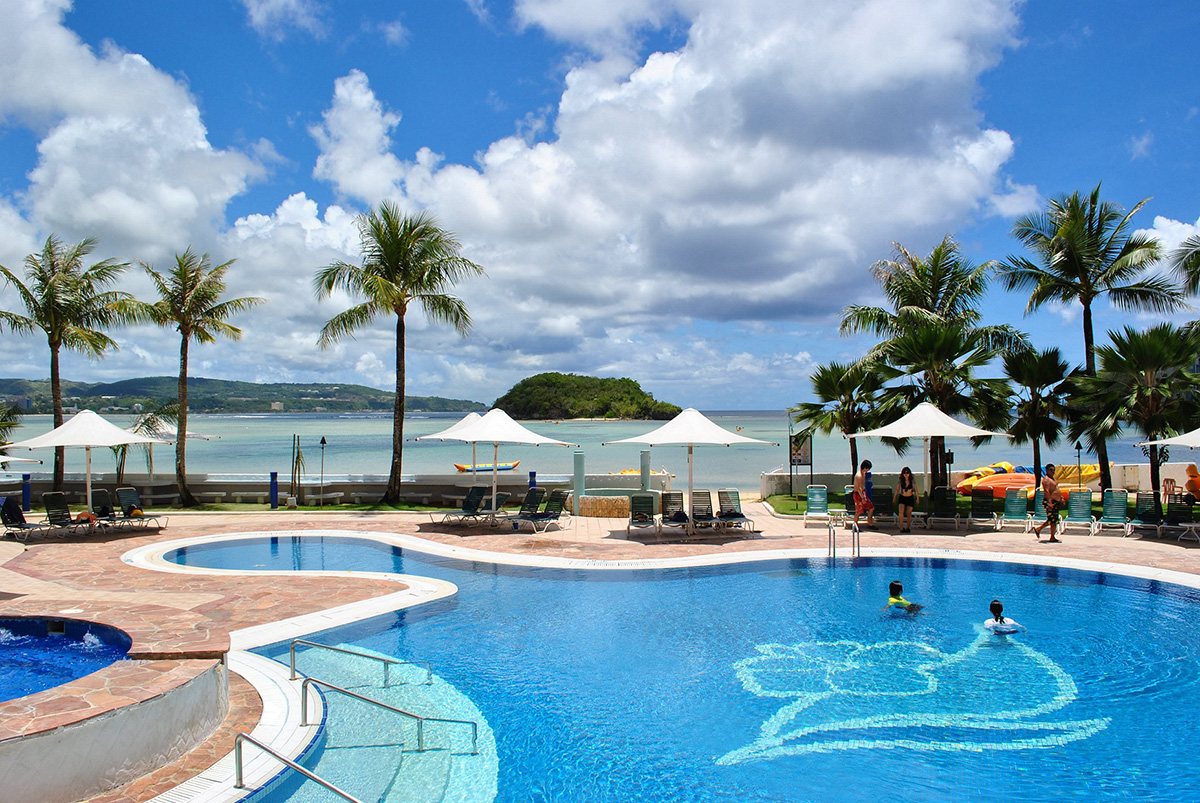In this exclusive interview, Yoshiharu Hoshino, CEO of Hoshino Resort, sheds light on Japan's tourism dynamics, emphasizing the resilience of the industry amidst challenges like the COVID-19 pandemic. Discussing the importance of diversifying tourism beyond major cities, Hoshino shares insights into strategies to promote regional tourism, leveraging nature attractions and unique local cultures. The interview also explores Hoshino Resort's distinctive approach, relying on local teams to craft unique experiences and the significance of direct bookings in the competitive resort market. Hoshino delves into the seasonality challenge, advocating for year-round tourism to ensure stable demand and enhance employee job security. The conversation concludes with Hoshino's aspirations for the company's future growth and seamless leadership transition.

2019 overseas arrivals to Japan saw a high of 31.8 million, the best year on record, however, with the COVID-19 pandemic this number dropped to 250,000. Despite this Japan ranked number one in the World Economic Forum’s Travel and Tourism Development Index during the pandemic, and the government maintains its target to welcome 60 million visitors annually by the year 2030. Furthermore, the first quarter of 2023 has already seen 4.7 million visitors welcomed. As a leading name in Japan’s hospitality industry, in your opinion what makes Japan a prime travel destination?
Let me start by explaining some basic figures that are important to talking about tourism in Japan. We as a country invited a great number of inbound tourists in 2019, but if you look at tourism consumption in Japan, in 2019 85% of Japanese people traveled to domestic destinations, and this was the largest segment and the most important market for the tourism industry in Japan. The record inbound tourist numbers only accounted for 15% of total consumption, and I think this is something we should always remember. In my business, the main target is still Japanese people, with recent figures suggesting the tourist consumption market is worth USD 258 billion, with inbound tourism accounting for USD 44 billion.
In 2019 20 million people traveled outside of Japan, so as you can see, outbound consumption was huge leading up to the COVID-19 pandemic. During the COVID-19 period itself, Japan lost its inbound consumption business but since then we have regained outbound consumption. People needed to change their destination to the domestic market, and this is why we were able to keep making profits even during the pandemic.
During that 2019 period 20 million were going out and 30 million were coming in, but that 20 million was spending a lot overseas. They all came back and became very good customers during that COVID-19 fiscal period. This is why we were able to survive.
To answer your question about why we are still such a popular destination, I think it comes down to Japan being very strong in cultural tourism. and this is why Tokyo is very popular. So far we’ve been able to attract 30 million tourists inbound to Japan and the reason first must come down to Japanese culture.
Another reason is because of the developing neighboring countries we have nearby such as China, Korea, Indonesia, and other Southeast Asian nations. They have populations that are booming and an emerging middle class that are now looking to travel overseas. One of the destinations that is close by and easy to travel to is Tokyo. The location of Japan in the middle of Asia makes it very accessible to all of these countries that are now becoming wealthy.
Even though 2019 was a record year for Japan’s tourism sectors, 47% went to Tokyo and 39% went to Osaka, while half of the nation’s prefectures only saw 1% of tourism. In 2022 the Japanese government stated that tourism was key to regional development and revitalization in areas that have suffered due to Japan’s demographic decline. You have regional hotels in places such as Nagano among many others. How can your hotels contribute to and promote regional tourism?
Inbound tourism has increased rapidly over the past 10 years, and it is important for Japan. Not because it is big, but because it is expected to get larger in the future while Japan’s population continues to decline. Although domestic tourism accounts for 85%, since the population is declining that number is never going to get bigger. We can offset the decline of the domestic market with an increase in inbound tourism.
Thinking about the importance of inbound tourism, it is clear to me that it is important to diversify. There are two ways to do so. Firstly through destinations, because currently Tokyo, Kyoto, and Osaka dominate. Those 3 account for almost 80% of tourism, while in Japan there are 47 total prefectures. Inbound has grown so big and the government announced that we are doing very well in attracting business but several prefectures don’t get any visitors from inbound tourists.
Additionally, locations like Tokyo and Osaka are experiencing too many tourists and thus you have overcrowding. Local businesses, especially in Kyoto, are starting to be affected by the change in lifestyle. This gives more reason to diversify the destinations. We need to find a way to invite those people to other prefectures besides Tokyo, Kyoto, and Osaka. This is the key to Japan’s tourism future.
One way to do so is to promote more nature tourism. We have 37 national parks in Japan and they are very good. If you look at a country like Switzerland for example, they understand the calendar and are very good at attracting tourists looking to explore nature. Compared to some European countries, Japanese mountains are exceptionally beautiful and there are so many attractions, but the problem is that the infrastructure isn’t there. We don’t have enough hotel rooms and facilities that can attract inbound tourism. We also haven’t developed mountain guides that can guide climbers and skiers around the natural beauty. Many countries around the world are more advanced in this field. I think that developing this level of nature tourism is very important in attracting tourists to other prefectures around Japan.
Areas like Okinawa for example have very different local cultures. I think that promoting those differences can be of great help in attracting more inbound tourists. There are different cuisines, attractions, and festivals that foreign tourists will never have experienced before. Once we spread the word about these unique experiences, we are very confident we can attract more tourists to rural Japan. There are so many things we can do to promote these rural areas.
I think another key to remember is that it is a collaborative effort between private entities like ourselves and governmental institutions like local prefectural governments. Unfortunately, local governments have been slow to change, despite some progress being made. The COVID-19 pandemic has been a turning point in understanding the issues, but actual changes are still happening at a slow pace. It's important to continue making progress every year but short-term goals can often take priority over long-term solutions, leading to insufficient allocation of resources for the latter.
Before the COVID-19 pandemic tourists from China, South Korea, Taiwan, and Hong Kong accounted for 70% of Japan’s total visitors while there is a pressing need to diversify Japan’s tourism with more Western visitors. Do you agree with this need to diversify the tourist base in this post-COVID world?
This is something that I’ve pushed for and I’ve kept telling others in the industry. It is important to diversify, and we can’t just rely on China, Korea, and Hong Kong. We must diversify the countries we cater to, and the main reason lies in productivity. It isn’t necessarily about the volume of business, since the volume is already big. The problem is the profitability that comes from that volume, and the tourism industry hasn’t been able to generate enough profits to satisfy investors. This links back to the rural area problem before, and as such there hasn’t been much investment in rural tourism for over 30 years now.
The root cause is the high seasonality of tourism in Japan. This is the main problem we should solve, and because of this seasonality, 70% of the total employees working in the tourism industry do not have secure full-time positions. We need to give people full-time positions to secure talented human resources in tourism, but they will move to another career if they don’t feel that they can grow in the future. It is my understanding that tourism accounts for the highest part-time rates in Japan by industry. The solution is to create tourism that operates year-round, which will allow us to maintain those human resources and give them a steady income year-round, plus there is a chance that those employees will see a career in tourism where they can grow and flourish. Solving this seasonality problem must take top priority.
Japanese people in particular take holidays only at certain times of the year, and to add to that there are very few specific holidays. There is summer vacation, Christmas, and New Year, and then you have the Golden Week holiday. These are the major holidays. Take Golden Week as an example. There is huge demand there as almost everyone has time off of work, but then you don’t have enough supply to meet the demand. Then the week after there is ample supply, but no demand since everyone is back at work. This means that you only need to hire people for the Golden Week, and the rest of the time you can reduce your staff numbers. This isn’t an ideal situation at all. This is why so many work part-time, and it is also why the average income of tourism employees is so low compared to other industries.
Inbound accounts for 15%, which we’ve talked about earlier, but their vacation time is much different from domestic tourists. The way I see inbound tourism is a way to solve the seasonality problem. For example, Australian summer vacation starts in the second week of January, right after New Year's for Japanese people, and right before Chinese New Year. If we can target the right tourists for the right time we can maintain a steady flow of tourism all year round rather than relying on peaks and troughs. Consistency is the key, as is maintaining human resources, and boosting everyone to the next level.
You own and operate over 55 accommodations under five distinct brands such as HOSHINOYA, KAI, RISONARE, OMO, and BEB. Given the competitive market of resorts in the present day, can you highlight one or two unique experiences or services that you think differentiate you from the competition?
One of the key characteristics of ourselves when compared to our competitors is that we tend to rely on a local team to come up with new attractions, new cuisines, and fresh new ideas to attract customers. We are a chain of hotels, so each of our brands has to have a promise it can guarantee to the customers so that the brand can have a strong presence in the market. We do try to limit the grand promises they want to follow and try to give them the freedom to be different and unique. After reaching over 30 facilities in Japan our HQ’s role has changed, and that is now taking the form of providing our facilities with a better business environment to flourish in.
We have established relationships with Online Travel Agencies and travel agencies, but the primary source of our profit comes from direct bookings. Around 70% of our customers book their stays online, and they prefer to do so using their smartphones. Direct bookings are becoming increasingly popular among global hotel operators, and it has become crucial to have an online booking system in place. This is where the profit lies, and it has become a competitive edge for hotel operators. Our goal is to provide customers with a seamless experience of selecting their preferred accommodations and making instant reservations at the best available rates. To achieve this we have to have a team of system engineers to create the system and optimize it. I think that this is where scale works in our favor and fortunately, a company our size has enough resources to allocate resources to come up with a competitive system.
Hoshino operates facilities all over Japan, so in your opinion which region or prefecture do you believe has the most growth potential for the future?
It is hard to say since I don’t like the idea of different areas competing with each other. If an area shows potential then I think that anyone can operate a tourism-based business and perform well, but the real challenge comes from going into an unknown area and creating a unique guest experience, then sending that message not only to Japanese customers but international ones as well. This is something our group can bring to the market and create more of an economic impact than just doing so in an already sustained tourism area. Although it is a high hurdle, it is something we enjoy. We’ve never really been a company to just fill expectations; when people think we are going left, we zag right.
From our research, we saw that Hoshino Resorts operates in various countries all over the world. An example can be seen in Guam where you opened a facility earlier in 2023. Can you tell us more about your expectations for this specific project?
Guam is a very unique market and it’s part of the territories of the United States. At the same time, it is only really attracting visitors from Korea and Japan. Koreans are a very important segment for us, not only in Guam but all over Japan and even in Korea as well. During the COVID-19 pandemic, this hotel faced a challenging time and the previous owner pulled out before approaching us to take over. We have been operating in this industry for the last 25 years, primarily focusing on turnaround business. Although we do open new facilities, our primary approach is based on the turnaround model. This approach has been successful for us in Guam as half of our market customers are Japanese and we have a strong brand in Japan.

Exterior - Hoshino Resorts RISONARE Guam (photo credits to Hoshino Resorts)
Aside from Guam, are there any other countries that you would like to expand to?
In general, I would say yes since we need to diversify to secure demand year-round. Stable demand is the most important priority for us right now and it is the solution to solving Japanese tourism problems.

Guest Room - Hoshino Resorts RISONARE Guam (photo credits to Hoshino Resorts)
When we spoke to Nishitetsu they were huge on revamping Fukuoka Airport to get direct tourists in from Vietnam and Thailand. Do you think that kind of transportation helps in places like Fukui? Is there a need for more regional transportation hubs?
Yes, this is another area of contention in terms of Japanese tourism. We have 98 airports nationwide, which is more than enough, accounting for roughly two per prefecture. At one point in time, the government was motivated to keep constructing new airports all over Japan, so the problem now is what exactly we can do with those 98 airports for them to operate more to the benefit of society.
Most of those airports are pretty empty with only a few flights coming in each day. Those smaller airports shouldn't be international airports because from my understanding international airports are very difficult to maintain, especially in terms of attracting international flights to them. Major airports should act as international hubs, and there isn't any reason to keep some of these smaller airports international since the demand isn't there. It is almost creating a false economy in those areas. The correct approach is to connect the main airports to the local airports with low-cost carriers, at least, in my opinion, this is the best option and there should be more focus on promoting these areas.

Pool - Hoshino Resorts RISONARE Guam (photo credits to Hoshino Resorts)
Imagine that we came back on your last day as president and interviewed you again. What goals or dreams do you hope to achieve by the time you are ready to pass the baton onto the next generation of Hoshino Resort executives?
A company is an ever-changing entity and we are now managing 68 properties. We must continue to grow. The handover of power can be challenging, and the management team will surely face difficulties initially, managing over 4,000 employees. I want to make sure that whoever takes over is strong enough and ready to lead from day one without making any mistakes. That is my goal.
0 COMMENTS